Introduction
White radish and beef stew, a dish deeply rooted in culinary traditions across Asia and beyond, is celebrated for its comforting warmth, rich flavors, and nourishing qualities. This humble yet sophisticated meal combines tender beef, earthy white radish, and aromatic spices in a harmonious broth that simmers to perfection. Whether you’re a seasoned home cook or a novice in the kitchen, mastering this stew requires attention to detail, patience, and an understanding of how ingredients meld over time. In this comprehensive guide, we’ll explore the secrets to creating a stew that balances depth of flavor with tender textures, ensuring every spoonful is a delight.
The Allure of White Radish and Beef Stew
Before diving into the recipe, it’s worth appreciating why this dish has endured for generations. White radish, also known as daikon in Japanese or lobak in Chinese, brings a mild sweetness and crisp texture that softens beautifully during slow cooking. Paired with beef—a protein-rich ingredient that becomes meltingly tender when simmered low and slow—the combination creates a symphony of flavors. The stew’s broth, infused with ginger, garlic, star anise, and soy sauce, offers a savory backbone, while a hint of sweetness from sugar or carrots rounds out the taste. This dish is equally at home as a weeknight family meal or a centerpiece for gatherings, proving that simplicity and elegance can coexist.
Selecting the Finest Ingredients
The foundation of any great stew lies in the quality of its ingredients. Here’s a breakdown of what to look for:
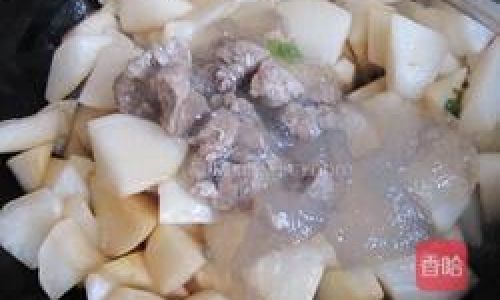
- Beef: Opt for well-marbled cuts like chuck roast, brisket, or shank. These cuts contain enough collagen to break down into gelatin during cooking, resulting in succulent, fork-tender meat. Avoid lean cuts like sirloin, as they may become dry and chewy.
- White Radish: Choose firm, unblemished radishes with smooth skin. Larger radishes tend to be sweeter and less fibrous, making them ideal for stews. Avoid those with soft spots or sprouting green shoots.
- Aromatics: Fresh ginger, garlic, and onions form the flavor base. Ginger adds warmth, garlic lends pungency, and onions contribute sweetness as they caramelize.
- Spices: Star anise, cinnamon sticks, Sichuan peppercorns, and bay leaves elevate the broth’s complexity. Use whole spices rather than ground to prevent bitterness.
- Soy Sauce and Rice Wine: These ingredients add umami and depth. Opt for light soy sauce to avoid overpowering the dish, and dry sherry or Shaoxing wine for a subtle acidity.
- Oil: A neutral oil like vegetable or canola works best for searing meat without imparting unwanted flavors.
Preparation: The Key to Perfect Texture
- Cutting the Beef: Trim excess fat from the beef and cut it into 2-inch cubes. Uniformity ensures even cooking. For added tenderness, consider marinating the meat in a mixture of soy sauce, rice wine, and cornstarch for 30 minutes before cooking.
- Prepping the Radish: Peel the radish and cut it into 1.5-inch chunks or thick half-moons. Larger pieces hold their shape better during simmering, preventing them from dissolving into the broth.
- Aromatics: Mince garlic and ginger finely, and slice onions into thin wedges. These will be sautéed early to build the stew’s flavor base.
- Blanching the Beef (Optional): For a clearer broth, blanch the beef in boiling water for 2–3 minutes, then rinse under cold water to remove impurities. This step is optional but recommended for a refined finish.
Cooking Techniques: Building Layers of Flavor
- Searing the Beef: Heat a heavy-bottomed pot or Dutch oven over medium-high heat. Add oil, then sear the beef in batches until browned on all sides. This step caramelizes the meat’s surface, creating Maillard reaction flavors that add depth to the stew.
- Sautéing Aromatics: In the same pot, reduce heat to medium and sauté onions, garlic, and ginger until fragrant and golden. This layer of flavor, known as the “aromatic base,” is crucial for a well-rounded broth.
- Deglazing the Pot: Pour in rice wine or sherry, scraping the bottom of the pot to release any browned bits. This process, called deglazing, incorporates concentrated flavor into the stew.
- Simmering the Stew: Return the beef to the pot, along with soy sauce, sugar, spices, and enough water or beef broth to cover the ingredients by 2 inches. Bring to a boil, then reduce heat to a gentle simmer. Cover and cook for 1.5–2 hours, or until the beef is tender.
- Adding the Radish: Once the beef is nearly tender, add the radish chunks. Simmer for an additional 30–40 minutes, or until the radish is soft but not mushy. This timing ensures the radish absorbs the broth’s flavor without losing its structure.
Achieving the Ideal Consistency
The stew’s texture hinges on balancing tender meat, intact radish, and a velvety broth. Here’s how to refine each element:
- Beef Tenderness: Test doneness by piercing a piece with a fork. It should glide in effortlessly but still hold its shape.
- Radish Texture: The radish should be soft enough to cut with a spoon but not disintegrating. Overcooking can lead to a mushy texture, so monitor closely.
- Broth Thickness: For a richer consistency, simmer uncovered during the final 20 minutes to reduce the liquid. Alternatively, whisk a teaspoon of cornstarch with water and stir it into the stew for a silky finish.
Seasoning and Adjustments
Taste the stew before serving and adjust seasoning as needed:
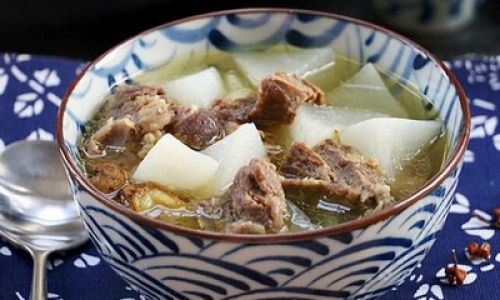
- Salt: Add soy sauce or kosher salt in small increments.
- Sweetness: A pinch of brown sugar can balance saltiness.
- Spice: For heat, add dried chili flakes or fresh chili peppers during cooking.
- Acidity: A splash of rice vinegar or lime juice brightens the broth.
Serving Suggestions
This stew shines when paired with:
- Steamed Rice: The fluffy grains soak up the savory broth beautifully.
- Noodles: Serve over udon, ramen, or egg noodles for a heartier meal.
- Crusty Bread: Ideal for dipping into the flavorful broth.
- Garnishes: Fresh cilantro, sliced green onions, or a drizzle of chili oil add vibrancy.
Troubleshooting Common Pitfalls
- Tough Beef: Undercooking or using the wrong cut. Ensure slow, moist heat and a collagen-rich cut.
- Bitter Broth: Overcooked spices or burnt aromatics. Toast spices briefly and monitor the pot to prevent scorching.
- Watery Stew: Insufficient simmering time. Reduce the liquid uncovered or thicken with cornstarch.
- Overpowering Spices: Use whole spices in moderation and remove them before serving if desired.
Variations to Explore
- Vegetarian Twist: Substitute beef with mushrooms or jackfruit, and use vegetable broth.
- Pressure Cooker Method: Reduce cooking time by 50% using a pressure cooker, but adjust liquid levels carefully.
- Spicy Version: Add doubanjiang (spicy bean paste) or gochujang during sautéing.
- Herb-Infused: Toss in fresh herbs like thyme or rosemary for a Western twist.
The Science Behind Slow Cooking
Slow cooking at low temperatures (around 180–200°F or 82–93°C) allows collagen in the beef to convert into gelatin, creating a luxurious mouthfeel. This process, known as denaturation, occurs gradually, which is why patience is key. Additionally, the radish’s high water content helps tenderize the meat while absorbing surrounding flavors, a phenomenon called osmosis.
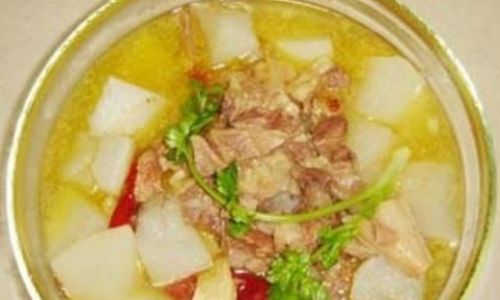
Cultural Significance
In many Asian cultures, white radish and beef stew is a symbol of nourishment and togetherness. Served during festivals, family reunions, or chilly winters, it embodies the idea of warmth and care. The dish’s simplicity also reflects a philosophy of using accessible ingredients to create something extraordinary—a testament to the cook’s skill.
Conclusion
Crafting the perfect white radish and beef stew is an art that rewards patience and precision. By selecting quality ingredients, mastering cooking techniques, and balancing flavors, you can create a dish that delights the senses and nourishes the soul. Whether enjoyed on a quiet evening or shared with loved ones, this stew is a reminder that culinary excellence lies in the details. So, gather your ingredients, embrace the slow rhythm of simmering, and savor the journey to stew perfection.



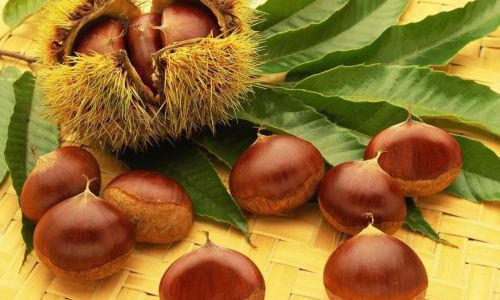
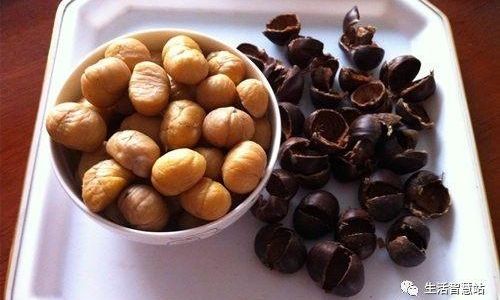
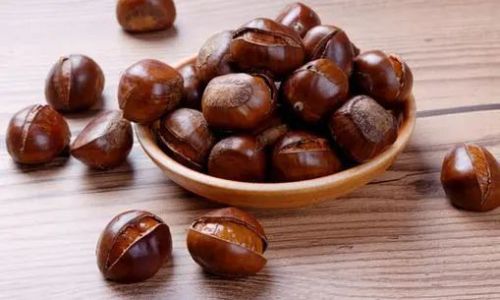
0 comments